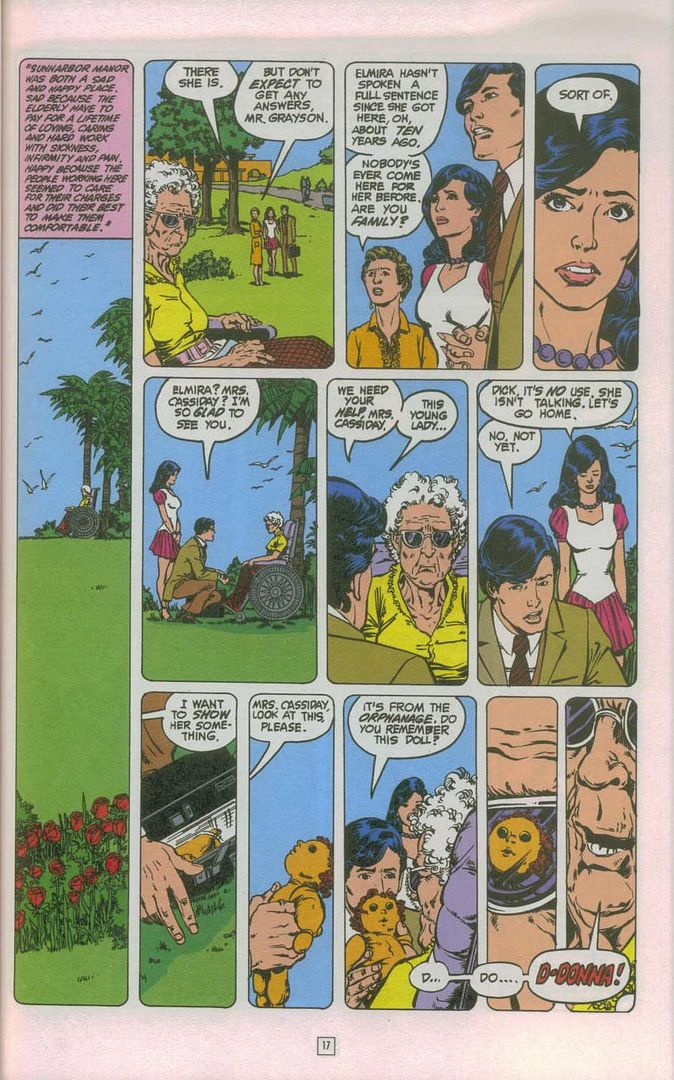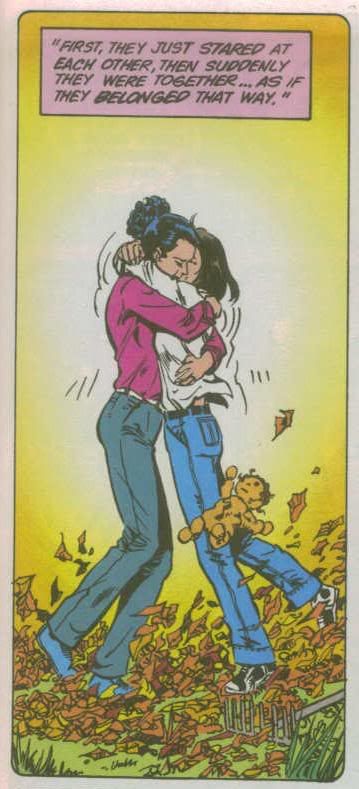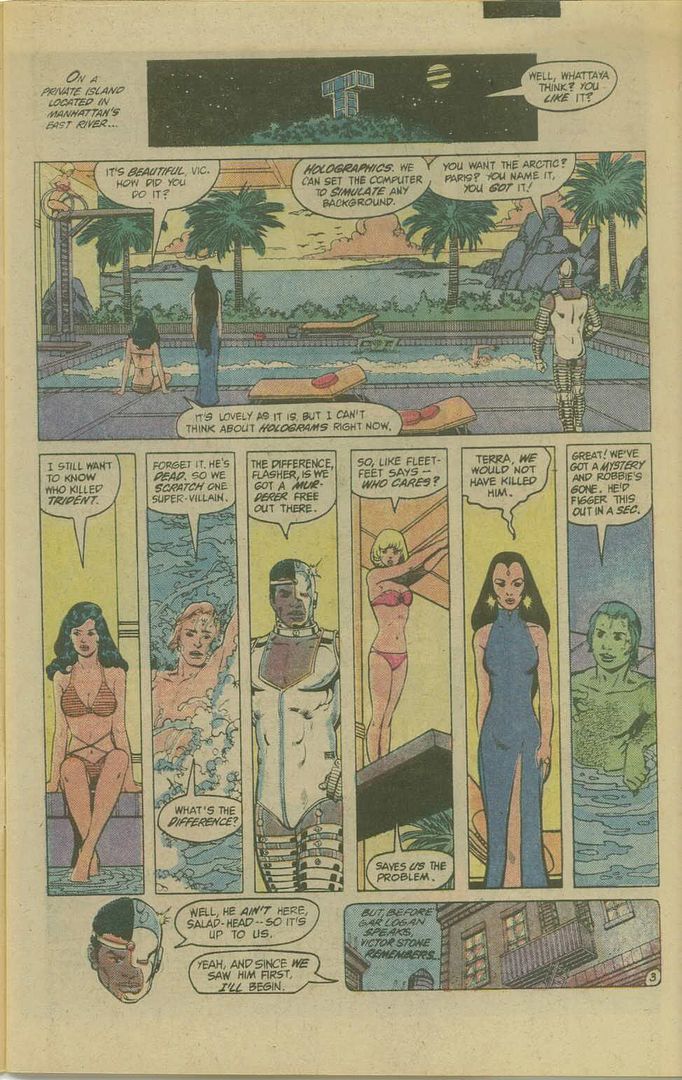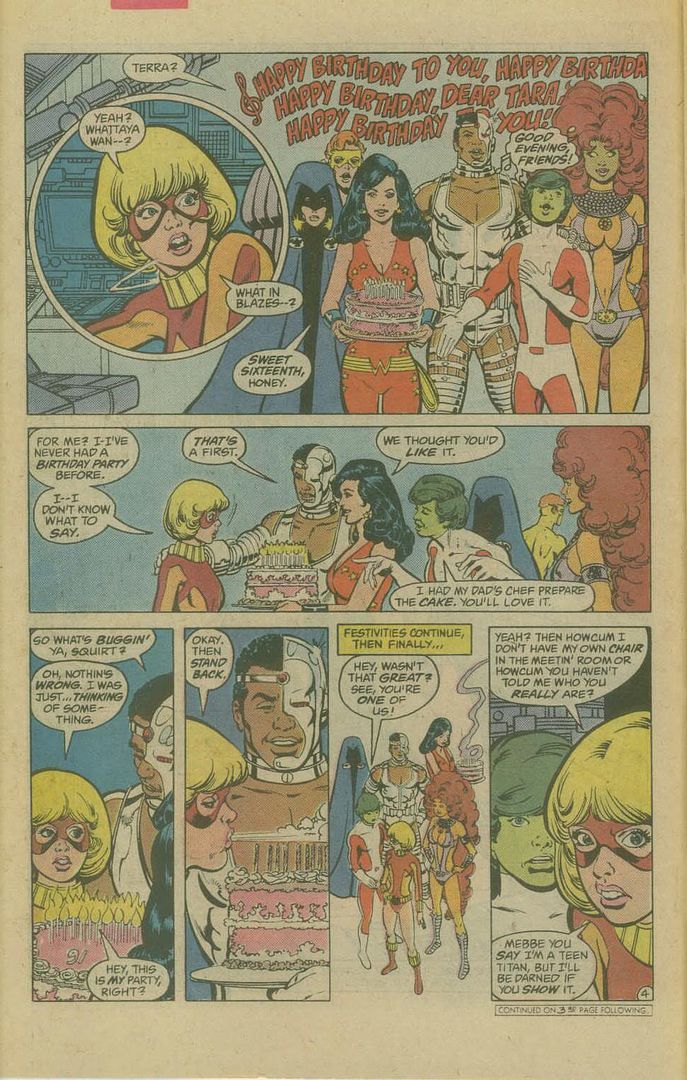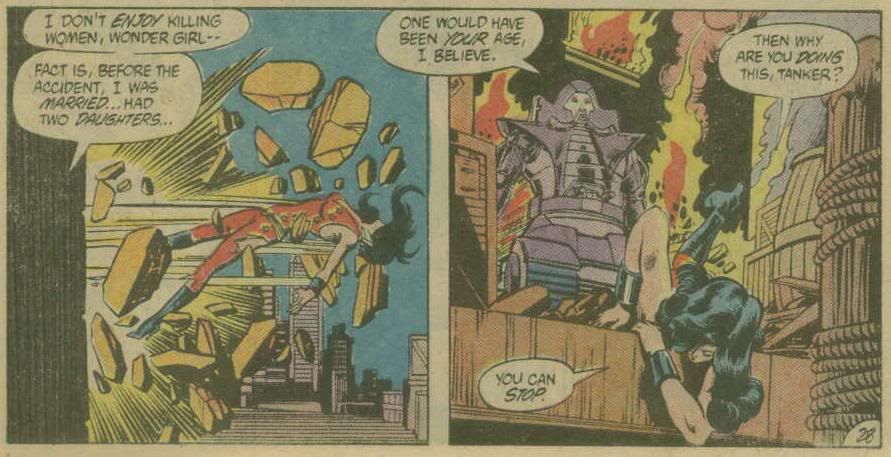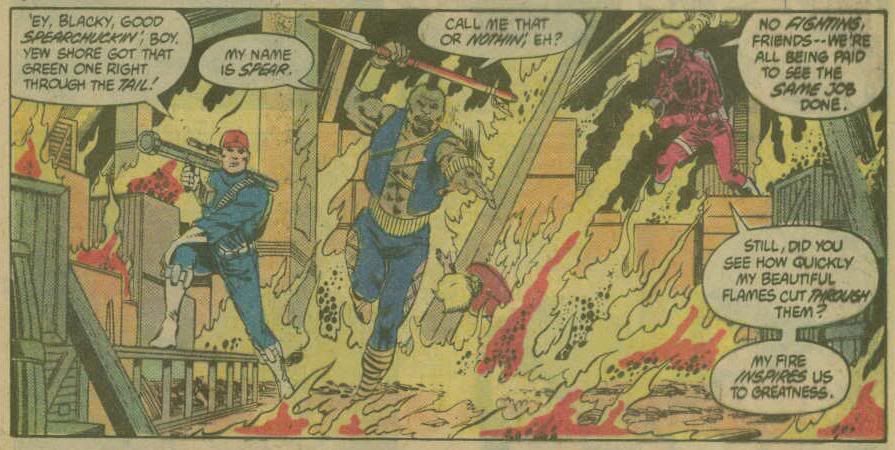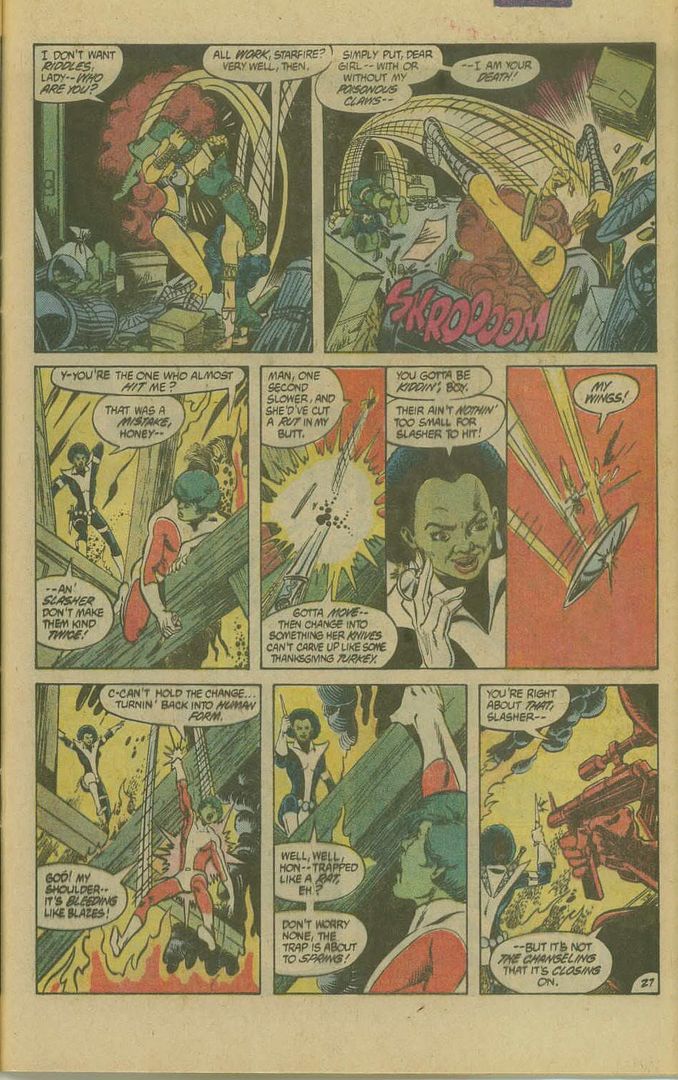I'm going to reserve a lot of comment on Supergirl and the Legion of Super-Heroes #21 (written by Mark Waid and Tony Bedard, drawn by Barry Kitson, Adam DeKraker, and Rob Stull) until I've had a chance to read the whole series. However, I will say that the prison-break scenes are very well done and fairly suspenseful, and the Dream Girl sequence has an unexpectedly poignant ending.
Perhaps the best way to describe Hawkgirl #55 (written by Walter Simonson, drawn by Howard Chaykin) is by comparison to the works of Ed Wood. I don't believe that the creative team intended to create a storyline that veers from impenetrable to goofy and back again, nor do I think that they wanted to end up with so much attention on Kendra's underwear. Obviously this is their attempt at Lovecraftian horror, which isn't a bad choice for the existing Hawkgirl setting. Still, it's hard to balance the creeping dread we're supposed to feel with the flamboyance of Chaykin's art, and I say that as someone who's always been a fan of Chaykin's. To be fair, I don't think Simonson's art would have improved matters much either. A moodier artist (Mike Mignola, Ryan Sook) would have been better, or Chaykin on a more sci-fi-oriented story. I think that's why I'm hanging around -- to see if these two consummate pros can pull a good result out of this arc, and to give incoming artist Joe Bennett a chance. How's that relate to Ed Wood? Well, I think at some point Simonson and Chaykin decided to just let themselves go and let the mistakes take care of themselves. They're having fun, so why aren't we?
A little of that applies as well to the end of the Amos Fortune/Royal Flush Gang crossover arc in JSA Classified #16 (written by Steve Englehart, pencilled by Tom Derenick, inked by Mark Farmer), but it's all climaxes, triumphs, and exclamation points. I'm still not sure where Gypsy got the powers or the personality with which Englehart has invested her, but apart from that it makes a goofy kind of sense. It's a harmless little story that probably could have been handled in half the time.
Art does make a big difference in The Flash: The Fastest Man Alive #3 (written by Danny Bilson and Paul DeMeo, pencilled by Karl Kerschl, inked by Serge Lapointe). Too bad they're guest artists, because they convey a much more open, fluid milieu for a super-speedster than the cramped, scratchy, almost over-rendered work of Ken Lashley. Valerie Perez's dark secret is intriguing, considering that it relates to the 1990 Flash anniversary special that was the character's only appearance (right?), but she and Bart lock lips much too quickly. Overall, the book seems like it's improved, but we'll see how long it lasts.
52 #16 (written by 2001, 2010, 2061, and 3001, breakdowns by Keith Giffen, pencils by Joe Bennett, inks by Ruy Jose) was pretty suspenseful. Isis is so nice, and such a good influence on Black Adam, that I am convinced she's totally going to die horribly in his arms, probably because of something Booster did. That sense of impending doom enhanced the suicide-bomber scenes, although the lack of outrage in the denouement was a bit far-fetched. Also, last night the History Channel produced an almost surreal piece on sexual practices of ancient Egypt -- Satuday nights on The History Channel are apparently like Friday nights on Cinemax -- which made a lot out of the gods' incestuous relationships, including those between Isis and Osiris. Wonder if the 52ers will include that in Isis' search for her brother...?
As depicted by Terry and Rachel Dodson in Wonder Woman #2 (written by Allan Heinberg), the new Department of Metahuman Affairs war room is a cavern filled with wall-sized video screens and thin monitors on chromed pedestals. (One monitor shows Diana's WW in what looks like a Phil Jimenez homage.) Its size belies Batman's modest comment about Sarge Steel "putting the agency back together." It's the kind of thing that, were it on TV or in a movie, one might imagine much of the story being set there, to get the most out of the environment. However, with comics' unlimited budget, it can be just another throwaway room, like Diana's 21st-Century Emma Peel jumpsuit (and rose-colored glasses -- nice touch!). Neither of them stand up to much logistical scrutiny. Those are pretty much my only complaints about the issue, which worked so well that when Diana actually started to spin (!) into her new/old costume, I felt a little twinge of fanboy glee. (As opposed to the other "twinges of glee" that the Dodsons' va-va-voom artwork might induce, of course.)
The ninja Man-Bats of Batman #656 (written by Grant Morrison, pencilled by Andy Kubert, inked by Jesse Delperdang) were as scary as advertised. This issue featured Batman in action as much as last time focused on Bruce Wayne, and it was the James Bond Batman of Morrison's JLA that I had been waiting to see again. In a departure from his JLA treatment, this time we hear Batman's internal monologue, mostly key words, well-chosen, and not the purple discourses on pain we'd gotten used to. Have I mentioned how much Kubert and Delperdang's Batman looks like Jim Lee's? At the same time, though, their other characters and backgrounds are much more organic -- rounder, with thicker lines, and you can almost stroke the Man-Bats' fur. (Make your dirty joke if you must.) It's a nice way to state subliminally that Batman is the intrusion into an otherwise real world, and had I the vocabulary I could connect that better with the pop-art pieces which comment silently on the fight scenes. Plus, Morrison thought to bring back Aunt Agatha, who was more meddling in the '50s than Peter Parker ever dreamed his aunt might be. Can't wait to see Bat-Mite!
Finally, here's Justice League of America #1, written by Brad Meltzer, pencilled by Ed Benes, and inked by Sandra Hope, with a little help from Dick Dillin and Dick Giordano in some flashback panels. Most of it's about Kathy Sutton and Traya, the Red Tornado's (common-law?) wife and adopted daughter, waiting for word that Daddy will be coming back to life after yet another bout with the explodies. It's a weird inversion of Identity Crisis which almost suggests that Meltzer is getting too comfortable with the emotional dynamics of grieving spouses. Oh yeah, and the Big Three are holding their fantasy draft for a new Justice League. (Why no chips or soda, though, DC? I would have paid an extra dollar to see Wonder Woman crush a can of Tab on her forehead.)
I can't remember which blogger said it, but it bears repeating: in Brave and the Bold #28, the JLA fought a giant alien starfish. In Justice League of America #1, it fought Despero. In Justice League #1, it fought terrorists at the United Nations. In JLA #1, it fought the Hyperclan. Now, it's all Bands Reunited and grieving widows? Meltzer crowds the panels with narrative captions that shift from person to person, distinguished only by color. In other words, talk, talk, talk -- Hulk want action!
There are some funny bits, including Oliver Queen left home to babysit; and the artificial-intelligence grapevine. There are also a few disturbing images, like Platinum looking too much like the Avengers' Jocasta, and Red Tornado adopting the "Aheh." laugh of Alan Moore's Invisible Man. However, I was glad to see some bits of minutiae that helped reassure me that Meltzer's heart was in the right place: the retro-style logo, the membership certificates, Felix Faust, and Deadman. I just continue to be frustrated with the notion that every storyline must now proceed in strict straight-line order, so that a #1 issue deprives us of the Big JLA Fight that an in medias res approach would have allowed. From what I remember from growing up in the Midwest, tornadoes' paths are more random than linear.
